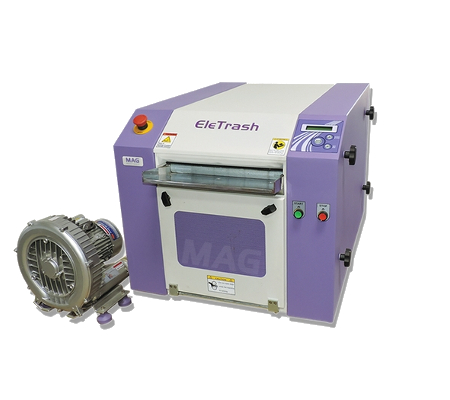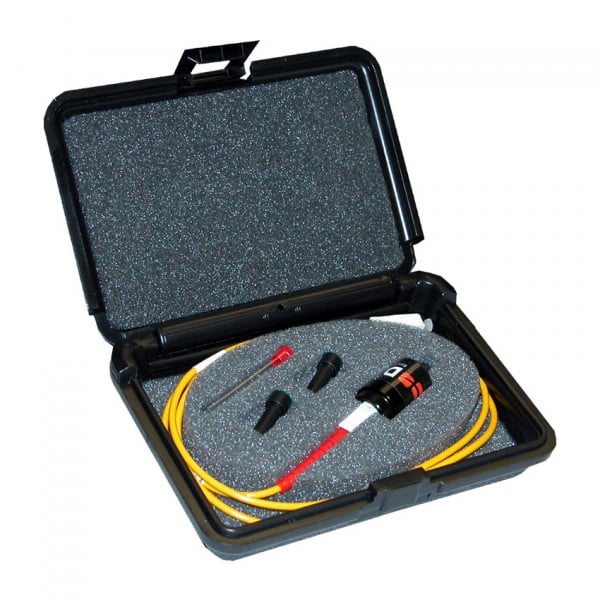A Comprehensive Overview to Optical Measurement System for Fiber Evaluation
When it concerns fiber evaluation, recognizing optical measurement systems is crucial for reviewing performance and ensuring quality. You'll explore vital strategies like interferometry and spectroscopy, which help you measure crucial specifications. Yet there's even more to it than simply these methods; mastering attenuation measurement strategies can greatly impact your network's effectiveness. As you navigate with this guide, you'll reveal insights that could transform your approach to fiber optics.
Understanding Optical Measurement Systems
When you explore optical dimension systems, you'll uncover they're essential for assessing fibers with accuracy. These systems make use of light to analyze numerous attributes of fibers, consisting of diameter, refractive index, and uniformity. By employing techniques like interferometry and spectroscopy, you can gain valuable insights into the fiber's properties.You'll discover that these systems are developed to reduce errors and enhance precision, making certain trusted data for your analysis. Various setups, such as single-mode and multi-mode systems, accommodate particular fiber types, permitting you to pick the very best fit for your needs.Moreover, the assimilation of innovative software application tools aids you analyze the data efficiently, making it easier to recognize any type of disparities or defects. As you explore much deeper right into these measurement systems, you'll value exactly how they improve the logical process and improve the total top quality of fiber production and testing.
Key Specifications for Fiber Evaluation
Trick parameters for fiber analysis play a vital duty in figuring out the high quality and efficiency of fiber optics. When you examine a fiber, you'll intend to concentrate on attributes such as depletion, transmission capacity, and modal diffusion. Attenuation determines the loss of signal strength as light journeys via the fiber. A reduced depletion worth shows far better quality and longer transmission distances - optical fibre diameter analyzer.Bandwidth describes the data-carrying capacity of the fiber and is essential for high-speed communication. You'll require to assess the transmission capacity to guarantee it satisfies your application needs. Modal dispersion, which develops from the various speeds at which light trips through different settings in multimode fibers, influences signal clarity
Methods for Depletion Measurement

Data transfer and Its Effect On Efficiency
Recognizing data transfer is vital for enhancing fiber efficiency, as it directly affects the amount of information that can be transferred over a network. Greater transmission capacity suggests you can send even more information simultaneously, permitting faster communication and much better overall performance. When you're collaborating with optical fibers, it's essential to take into consideration exactly how transmission capacity communicates with fiber features, such as core size and product properties.If the bandwidth is limited, you may experience data loss or slower speeds, affecting your applications. In addition, various kinds of fibers can support varying data transfer degrees, so it is necessary to select the ideal fiber for your certain needs.You should additionally bear in mind that ecological factors, like temperature and exterior interference, can impact data transfer. By comprehending these facets, you can make informed choices to boost your fiber optic systems, guaranteeing reliable and efficient information transmission.
Refractive Index Measurement Methods

Complete Interior Reflection
Total inner reflection (TIR) acts as an essential principle for gauging the refractive index of fibers. When light travels from a denser tool to a less thick one, it can only be fully shown if the angle of occurrence surpasses a specific threshold, referred to as the important my sources angle. This phenomenon enables you to determine the refractive index by examining the angles at which light reflects or refracts. By utilizing an arrangement that directs light right into a fiber and measures the resulting angles, you can determine the refractive index properly. Comprehending TIR not just boosts your fiber analysis however additionally enhances the style and efficiency of optical systems. So, leveraging TIR can result in a lot more effective fiber-based applications.
Interferometric Techniques
Building on the principles of overall interior representation, interferometric strategies give an effective ways for determining the refractive index of fibers with high accuracy. These techniques manipulate the disturbance patterns produced when light beam of lights split and recombine after traveling different paths. You can use arrangements like the Michelson or Mach-Zehnder interferometer to analyze phase changes created by adjustments in refractive index. By very carefully adjusting your system and examining the resulting edges, you can determine the refractive index with impressive precision. It's vital to preserve stable ecological problems to lessen errors. With these techniques, you'll boost your understanding of fiber properties, bring about much better performance in numerous applications, from telecoms to sensor modern technology.
Modal Diffusion and Its Importance
Modal diffusion refers to the dispersing of light pulses as they travel via a fiber, which can impact the overall efficiency of the system. You'll see that this sensation can result in signal distortion, impacting information transmission rates and top quality. Comprehending its significance is crucial for enhancing fiber optic layouts.
Interpretation of Modal Diffusion
In optical fiber interactions, modal diffusion plays a considerable duty in identifying signal top quality and transmission speed. It takes place when different light modes take a trip at varying speeds via the fiber. Since each setting has distinct paths and features, they can show up at the obtaining end site here at various times. This time difference can lead to indicate dispersing and distortion, which can weaken the overall performance of the interaction system. You could encounter modal diffusion largely in multimode fibers, where the multiple paths of light worsen the concern. Recognizing modal dispersion is vital for maximizing fiber designs and guaranteeing that your communication systems run effectively, keeping the honesty of the transmitted signals over longer ranges.
Effects on Fiber Performance
Comprehending modal dispersion assists highlight its impacts on fiber performance. This phenomenon happens when various settings of light travel at varying speeds within the fiber, resulting in indicate spreading in time. As you evaluate fiber optics, you'll discover that enhanced modal dispersion can significantly deteriorate signal quality, resulting in minimized data transfer and longer transmission distances. In sensible terms, this indicates your data can arrive distorted or postponed, impacting total interaction effectiveness. To minimize these impacts, you could take into consideration utilizing single-mode fibers, which reduce modal diffusion. By picking the ideal fiber type and recognizing just how modal dispersion influences efficiency, you can improve transmission high quality and guarantee reliable information transfer in your optical measurement systems.
Devices and Technologies for Optical Measurements
When it pertains to optical measurements, numerous cutting-edge tools and technologies go to your disposal to enhance fiber evaluation. You'll find fiber optic testers, which analyze signal high quality and performance, essential for preserving perfect network performance. Optical time-domain reflectometers (OTDRs) are important for locating mistakes and measuring loss over ranges, offering thorough insights right into fiber integrity. Furthermore, spectrometers can analyze light spectra, helping you determine product residential properties and composition.Don' t neglect the value of imaging systems, like digital microscopes, that allow you to aesthetically inspect fiber surface areas for issues. Also, think about making use of advice polarization analyzers to measure anxiety and pressure in fibers, which is vital for recognizing their behavior under various conditions. By leveraging these devices and modern technologies, you can greatly improve your fiber analysis procedures, making certain integrity and high efficiency in your optical networks.
Regularly Asked Questions
What Are the Costs Associated With Optical Measurement Solutions?
The expenses connected with optical dimension systems can vary considerably. You'll need to assess devices costs, maintenance costs, software program licenses, and possible training costs. Budgeting carefully will help you stay clear of unforeseen financial challenges down the line.

How Often Should Fiber Evaluation Be Carried Out?
You need to perform fiber analysis consistently, usually every six months or after substantial adjustments in the atmosphere (fibre testing equipment). This assures suitable efficiency and aids identify potential problems prior to they impact your system's efficiency and integrity
Can Optical Measurement Systems Be Calibrated in your home?
Yes, you can adjust optical dimension systems in the house, but it requires precision. Ensure you follow the maker's standards, make use of ideal calibration criteria, and ascertain your outcomes to assure accuracy in your dimensions.
What Industries Generally Utilize Optical Measurement Solutions?
You'll discover optical dimension systems widely used in markets such as telecommunications, production, medical care, and research study. They're essential for high quality control, fiber analysis, and guaranteeing accurate measurements in various applications, boosting effectiveness and accuracy throughout industries.
Are There Any Kind Of Safety And Security Worries With Optical Measurement Solutions?
Yes, there are security worry about optical dimension systems. You ought to constantly use safety eyeglasses to shield your eyes from extreme lights and assurance proper training to take care of devices safely and stay clear of mishaps.